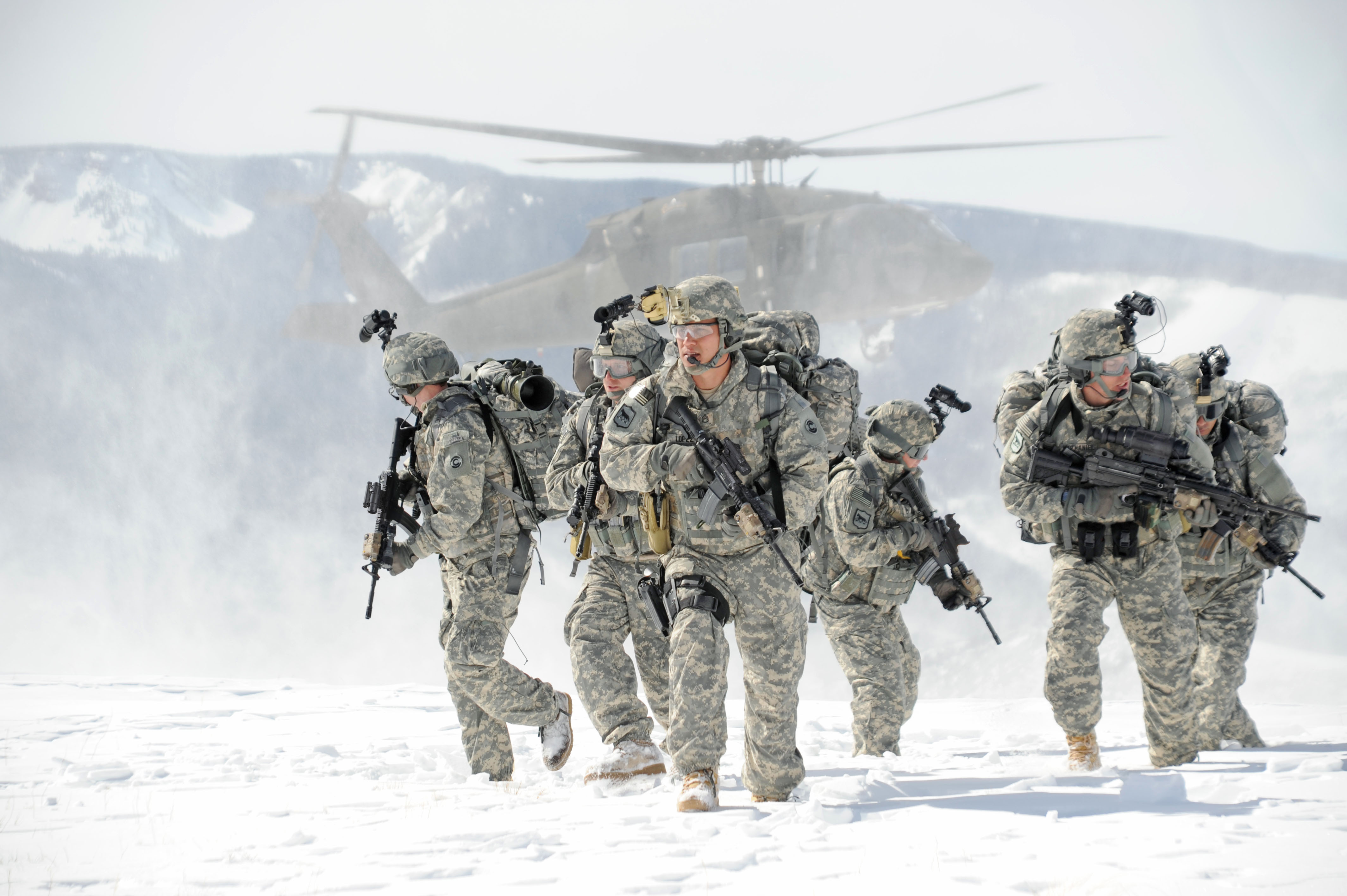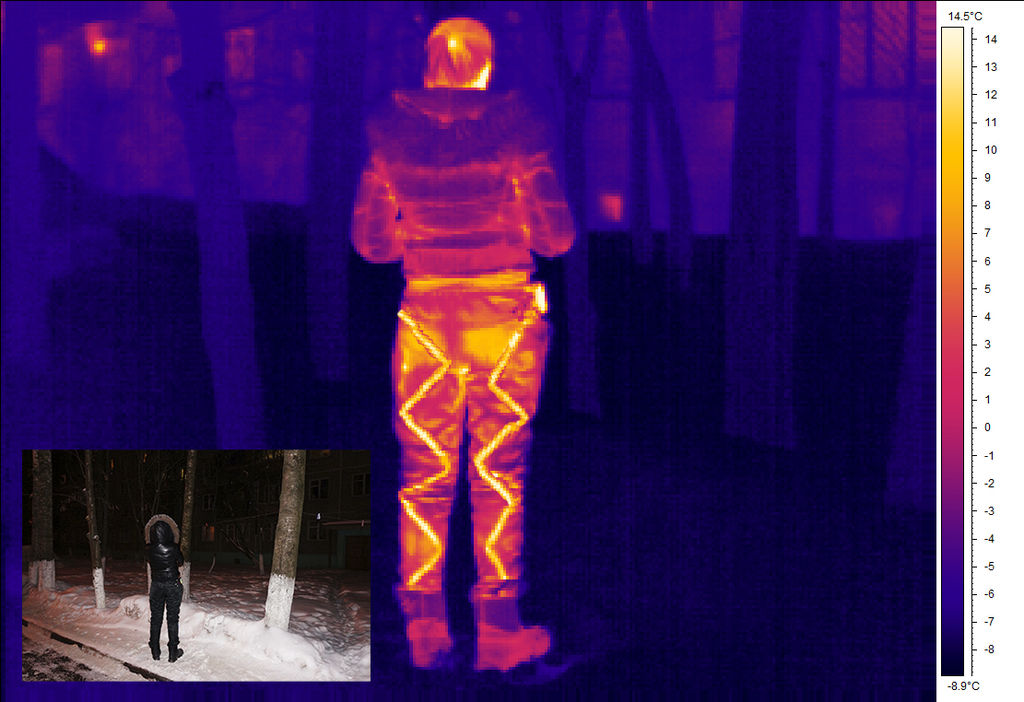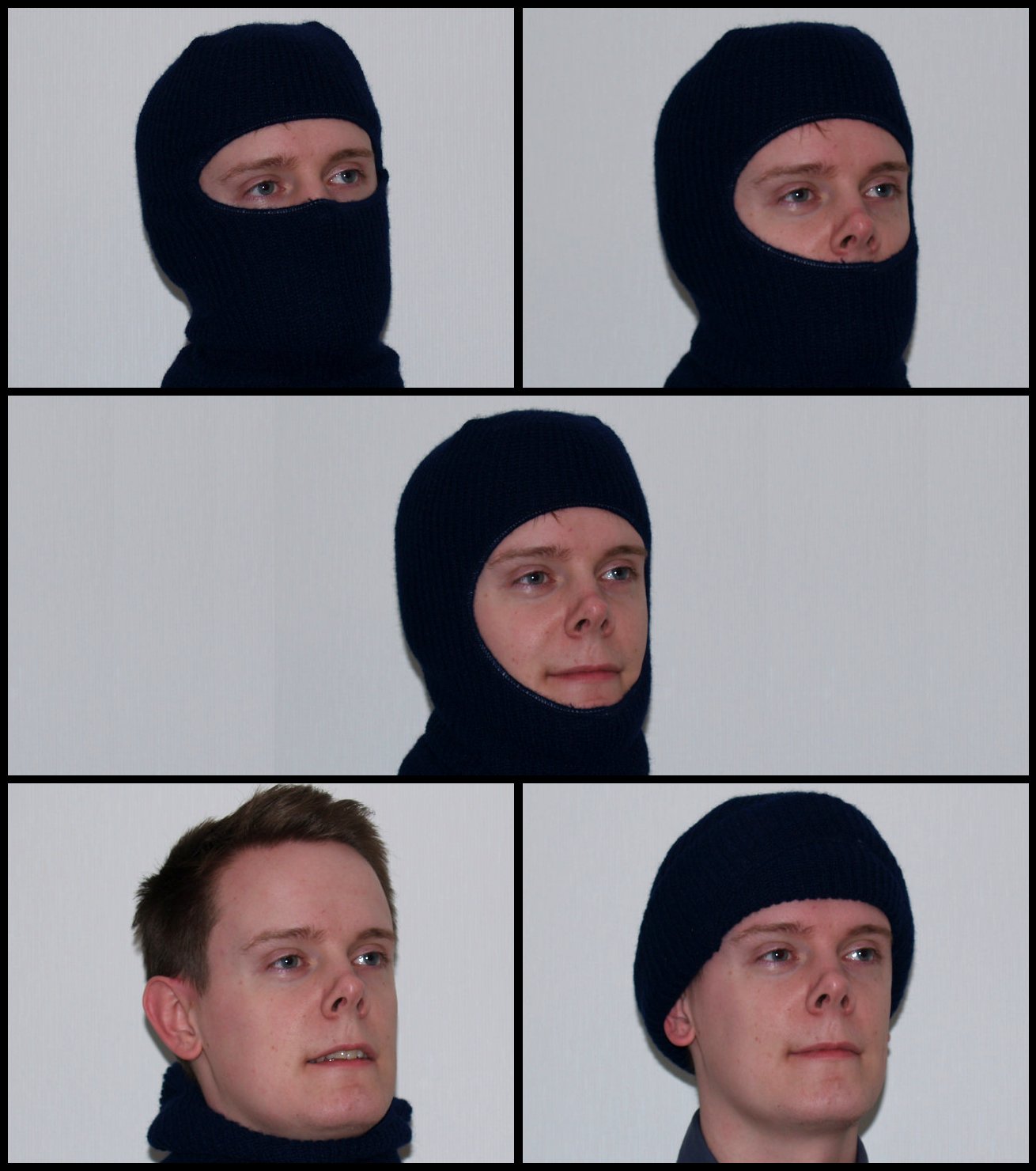|
Extreme Cold Weather Clothing
Extreme cold weather clothing refers to clothing for arctic or mountainous areas. Its primary function is to trap air as an insulator to prevent heat loss from the wearer's body. Secondary and necessary is to conduct water vapor away from the body to keep the insulating layers dry. A shell keeps the wind from disturbing the still air in the insulating layers. In warmer conditions, the shell protects from water intrusion. The U.S. National Weather Service defines ''Extreme cold warning, extreme cold'' as with winds less than . In these conditions, the unprotected skin of a healthy adult will develop frostbite in ten to twenty minutes. The Canadian standard includes lower temperatures. Principles A vacuum is the best insulator, but its use in clothing is impractical. Dry air is a practical insulator. Extreme cold weather clothing uses still dry air to insulate the body, layers of loose air trapping material are most effective. The inner layers should conduct moisture away from t ... [...More Info...] [...Related Items...] OR: [Wikipedia] [Google] [Baidu] |
Clothing
Clothing (also known as clothes, apparel, and attire) are items worn on the body. Typically, clothing is made of fabrics or textiles, but over time it has included garments made from animal skin and other thin sheets of materials and natural products found in the environment, put together. The wearing of clothing is mostly restricted to human beings and is a feature of all human societies. The amount and type of clothing worn depends on gender, body type, social factors, and geographic considerations. Garments cover the body, footwear covers the feet, gloves cover the hands, while hats and headgear cover the head. Eyewear and jewelry are not generally considered items of clothing, but play an important role in fashion and clothing as costume. Clothing serves many purposes: it can serve as protection from the elements, rough surfaces, sharp stones, rash-causing plants, insect bites, by providing a barrier between the skin and the environment. Clothing can insulate against ... [...More Info...] [...Related Items...] OR: [Wikipedia] [Google] [Baidu] |
Bunny Boots
Bunny boots or Mickey Mouse boots (depending on the version) are the most common nicknames for the Extreme Cold Vapor Barrier Boots (Types I and II) used by the United States Armed Forces. These large, bulbous, waterproof rubber boots can be worn in extremely cold weather, , with the liner-free interior retaining warmth by sandwiching up to one inch of wool and felt insulation between two vacuum-tight layers of rubber; this vacuum layer insulates the wearer's feet similar to a vacuum flask. These boots were originally developed at the Navy Clothing and Textile Research Center in Natick, Massachusetts, for use during the Korean War. Originally designed during the Korean War for military expeditions in extremely cold weather (presently defined by the National Weather Service as ), the ECVB Boots are rated to either -20°F to -60°F (depending on the type) and have been sold to civilians in large numbers as military surplus. Owing to their warmth and low price, these boots have b ... [...More Info...] [...Related Items...] OR: [Wikipedia] [Google] [Baidu] |
Environmental Suits
A biophysical environment is a life, biotic and Abiotic component, abiotic surrounding of an organism or population, and consequently includes the factors that have an influence in their survival, development, and evolution. A biophysical environment can vary in scale from microscopic to global in extent. It can also be subdivided according to its attributes. Examples include the marine environment, the atmospheric environment and the Ecoregion#Terrestrial, terrestrial environment. The number of biophysical environments is countless, given that each living organism has its own environment. The term '':wikt:environment, environment'' can refer to a singular global environment in relation to humanity, or a local biophysical environment, e.g. the UK's Environment Agency. Life-environment interaction All life that has survived must have adapted to the conditions of its environment. Temperature, light, humidity, soil nutrients, etc., all influence the species within an environment. Ho ... [...More Info...] [...Related Items...] OR: [Wikipedia] [Google] [Baidu] |
Environmental Suit
An environmental suit is a suit designed specifically for a particular environment, usually one otherwise hostile to humans. An environment suit is typically a one-piece garment, and many types also feature a helmet or other covering for the head. Where the surrounding environment is especially dangerous the suit is completely sealed. The first environmental suits were diving suits designed to protect a diver from the surrounding water (see timeline of underwater technology). Later developments were designed to protect the wearer from the cold (for example wetsuits and other ambient pressure suits) or from undersea high pressure and the resulting decompression sickness (for example atmospheric diving suits). Protecting the wearer from cold is also a feature of ski suits. In aviation, pressure suits protect fighter pilots from hypoxia / altitude sickness, and g-suits from the adverse effects of acceleration (gravity-induced loss of consciousness, or G-LOC). The most extreme ... [...More Info...] [...Related Items...] OR: [Wikipedia] [Google] [Baidu] |
Extended Cold Weather Clothing System
The Extended Cold Weather Clothing System (ECWCS ) is a protective clothing system developed in the 1980s by the United States Army Natick Soldier Research, Development and Engineering Center, Natick, Massachusetts. The first generation ECWCS consisted of Anorak, parka and trousers plus 20 other individual clothing, handwear, headwear and footwear items which are used in various combinations to meet the cold weather environmental requirements of the US military (and others). The Extended Climate Warfighter Clothing System, or Gen III ECWCS (), is designed to maintain adequate environmental protection in temperatures ranging between -60 and +40 Fahrenheit (about -51 and +4 Celsius) 1st Generation The entire ECWCS ensemble (1st generation) consists of: # undershirt, cold weather, polypropylene # [drawers], cold weather, polypropylene # shirt, cold weather, polyester fiberpile # overall, bib, cold weather, fiberpile # liner, cold weather trousers, field # liner, cold weather, coat, ... [...More Info...] [...Related Items...] OR: [Wikipedia] [Google] [Baidu] |
Sportswear (activewear)
Sportswear or activewear is clothing, including footwear, worn for sport or physical exercise. Sport-specific clothing is worn for most sports and physical exercise, for practical, comfort or safety reasons. Typical sport-specific garments include tracksuits, shorts, T-shirts and polo shirts. Specialized garments include swimsuits (for swimming), wet suits (for diving or surfing), ski suits (for skiing) and leotards (for gymnastics). Sports footwear include trainers, football boots, riding boots, and ice skates. Sportswear also includes bikini and some crop tops. Sportswear is also at times worn as casual fashion clothing. For most sports the athletes wear a combination of different items of clothing, e.g. sport shoes, pants and shirts. In some sports, protective gear may need to be worn, such as helmets or American football body armour. Especially in team sports which involved blocking, intercepting, or pursuing small, hard projectiles such as cricket, baseball, and hocke ... [...More Info...] [...Related Items...] OR: [Wikipedia] [Google] [Baidu] |
Heated Clothing
Most heated clothing is designed for cold-weather sports and activities, such as motorcycle riding, downhill skiing, Diving (sport), diving, winter biking, and snowmobile, snowmobiling, trekking and for outdoor workers such as construction workers and carpenters. Since the London Olympics, heated clothing has also been used by athletes to keep their muscles warm between the warm-up and the race. Normal insulation works by trapping body heat, so if it gets wet from sweat or rain, or if a person stops exercising, the insulation may not keep them warm. With heated garments, a person can keep warm even if they are resting and not producing heat, or if their coat is damp from sweat. Types There are many types of heated clothing. Most notably these use 12, 7.4, and 5-volt powerbanks. The 5-volt powerbank allows one to use a common powerbank for both heating apparel and charging personal electronics. The 7.4-volt battery is the most common type of heated clothing battery system, a ... [...More Info...] [...Related Items...] OR: [Wikipedia] [Google] [Baidu] |
Balaclava (clothing)
A balaclava, also known as a balaclava helmet or ski mask, is a form of cloth headgear designed to expose only part of the face, usually the eyes and mouth. Depending on style and how it is worn, only the eyes, mouth and nose, or just the front of the face are unprotected. Versions with enough of a full face opening may be rolled into a hat to cover the crown of the head or folded down as a collar around the neck. History Similar styles of headgear were known in the 19th century as the ''Uhlan cap'' worn by Polish and Prussian soldiers, and the ''Templar cap'' worn by outdoor sports enthusiasts. The name comes from their use at the Battle of Balaclava during the Crimean War of 1854, referring to the town near Sevastopol in the Crimea, where British troops there wore knitted headgear to keep warm. Handmade balaclavas were sent over to the British troops to help protect them from the bitter cold weather. British troops required this aid, as their own supplies (warm clothing, w ... [...More Info...] [...Related Items...] OR: [Wikipedia] [Google] [Baidu] |
Mitten
A mitten is a type of glove that covers the hand but does not have separate finger openings or sheaths. Generally, mittens still separate the thumb from the other four fingers. They have different colours and designs. Mittens provide greater thermal insulation than gloves as they have a smaller surface area exposed to the cold, but have a trade-off in dexterity. Mittens are associated with cold weather, children's clothing, comfort and various occupational uses. In the English-speaking world, they also have a cultural association with domestic cats, as in the Three Little Kittens. Mittens are a common sight on ski slopes, as they not only provide extra warmth but extra protection from injury. They are also recommended as part of extreme cold weather clothing. Oven mitts are worn in the kitchen to protect the hands from hot objects. History Humans have likely used mittens for millennia, but wool and other materials used to construct clothing biodegrade quickly, which limits ... [...More Info...] [...Related Items...] OR: [Wikipedia] [Google] [Baidu] |
Mountaineering Boot
Mountaineering, expedition or high altitude boots are a type of footwear used in mountain climbing. They are designed specifically for moving over harsh terrain. Design Not to be confused with hiking boots, mountaineering boots are usually taller, stiffer, and insulated. The boots can be made of leather, plastic, or modern synthetic materials like Kevlar. The extra height and stiffness of mountaineering boots helps support the climber in steep terrain where flexible boots could cause unsure footing and possibly result in a fall. This extra stiffness is traditionally achieved through the use of a full steel shank, though some manufacturers have begun to use carbon fiber to create the necessary stiffness. Mountaineering boots are typically designed to be used with crampons. To achieve compatibility with crampons, welts are moulded into the toe and heel of the boot, providing a platform for the crampon to attach to. The stiffness of the boot enhances the precision of the cr ... [...More Info...] [...Related Items...] OR: [Wikipedia] [Google] [Baidu] |
Heat Loss
Heat transfer is a discipline of thermal engineering that concerns the generation, use, conversion, and exchange of thermal energy (heat) between physical systems. Heat transfer is classified into various mechanisms, such as thermal conduction, thermal convection, thermal radiation, and transfer of energy by phase changes. Engineers also consider the transfer of mass of differing chemical species (mass transfer in the form of advection), either cold or hot, to achieve heat transfer. While these mechanisms have distinct characteristics, they often occur simultaneously in the same system. Heat conduction, also called diffusion, is the direct microscopic exchanges of kinetic energy of particles (such as molecules) or quasiparticles (such as lattice waves) through the boundary between two systems. When an object is at a different temperature from another body or its surroundings, heat flows so that the body and the surroundings reach the same temperature, at which point they are in t ... [...More Info...] [...Related Items...] OR: [Wikipedia] [Google] [Baidu] |








